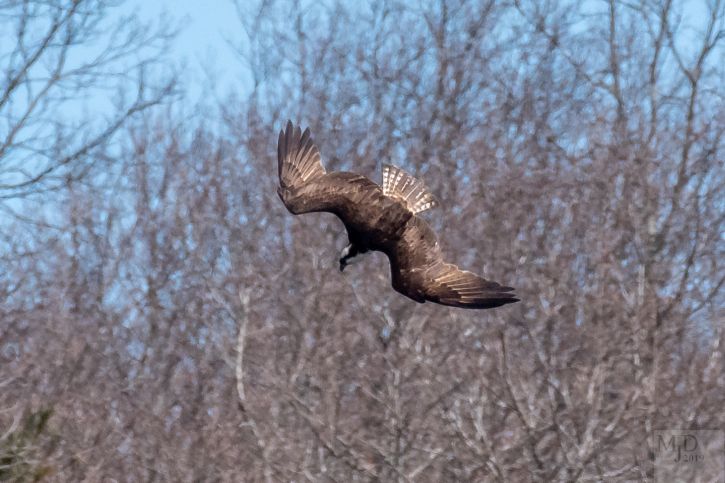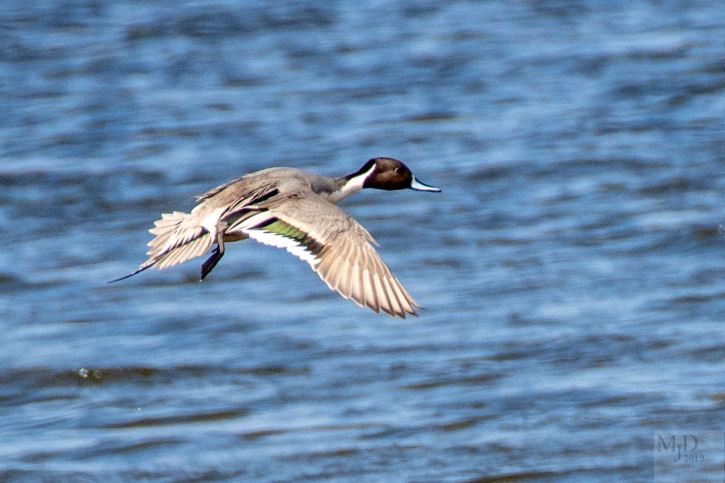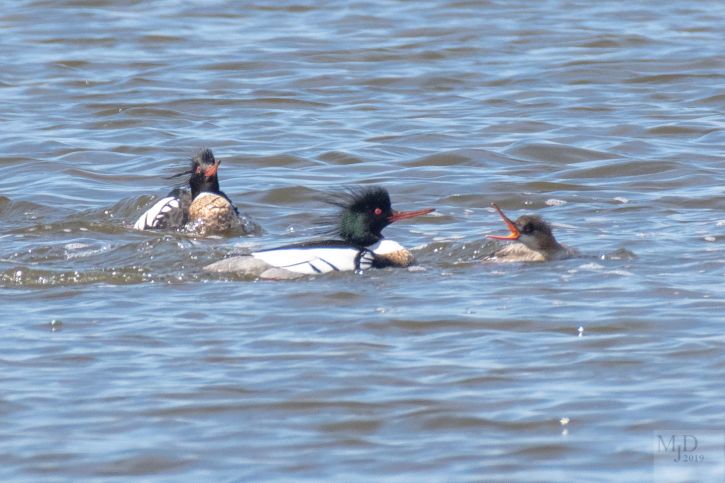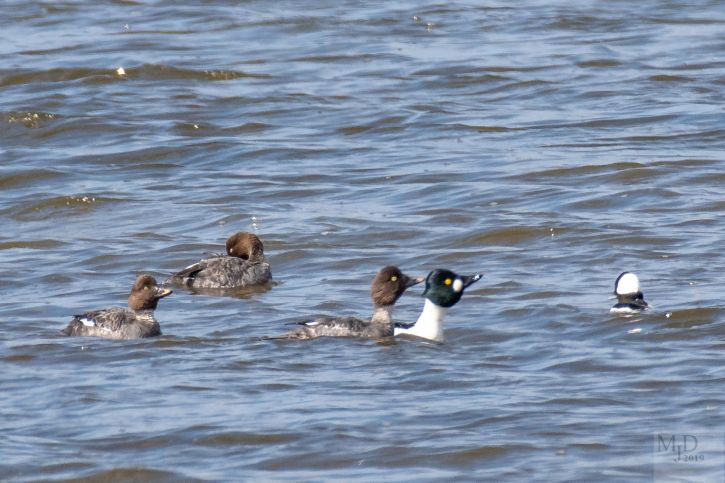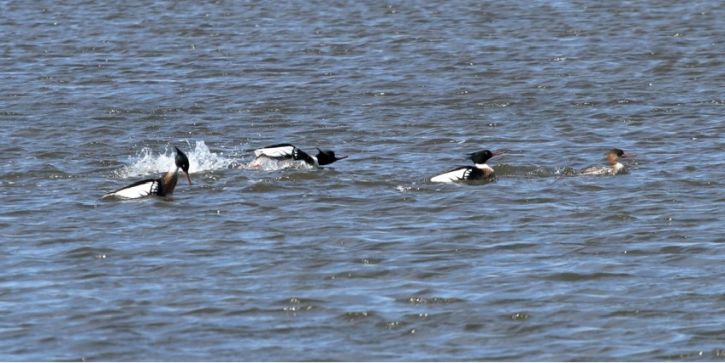This past Wednesday, Susan Yurkus and I led Wednesday Morning Birding in sunny, mild conditions. We first took a look at the Common Pasture on Scotland Road, but it was very quiet this week, with reduced numbers of Green-winged Teal, and few other ducks. We were very happy to find three Palm Warblers, however, making last week’s “quiz birds” a bit more meaningful. Lots of birds were singing along the way back to Parker River National Wildlife Refuge. Chipping Sparrows had moved in and set up territories all along our route, and a Carolina Wren was announcing the season among other birds setting up early territories. We found Turkey Vultures, sometimes in groups of several birds, all along our route.
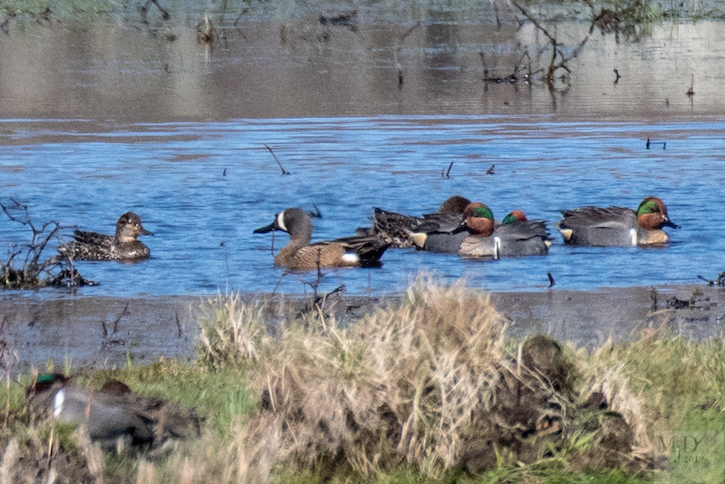
At parking lot #1 on the refuge, we found a pair of Ospreys on the platform off of the boat ramp. An American Kestrel performed above the dunes; many are passing through, counted by the Eastern Mass Hawk Watch volunteers. The Purple Martin houses were up, but not full of martins, though one Tree Swallow and two Barn Swallows passed over, heading north with determination. Great Egrets were scattered all over the North Marsh.
The Main Panne was strangely empty, though a few ducks were scattered in the south pannes. Song and Chipping Sparrows fled before the van as we pushed south for a stop at the Joppa Flats Bird Banding Station. Special, unplanned trips to visit the station are only available to groups that Joppa Flats staff lead in, so what a treat! After Ben explained the process of migratory banding stations to our group, the banders came back with a Brown Creeper, one of several that they had been catching throughout the day. Such cool little birds! Ruby-crowned Kinglets were cavorting in the thickets, and a Downy Woodpecker and a FOY Brown-headed Cowbird also came through. Two Ospreys hovered impressively as we exited the banding station lane, and they continued for the rest of the time we were there.

At Hellcat Swamp, Bill Forward Pool was strewn with Buffleheads, and one Double-crested Cormorant patrolled. There were more cormorants about the marsh this week, the first before the horde that will burst on the scene any day now. The strong winds we are experiencing from the southwest last night and tonight should surely bring us a new batch of migrants; Ben Flemer said they caught lots of Blue-Gray Gnatcatchers at the banding station today. We certainly hope this weather holds up through the migration season we have coming. Those westerlies really help boost our numbers of migrants here on the coast, so we are crossing our fingers for an influx in the coming days! We hope we see you soon.
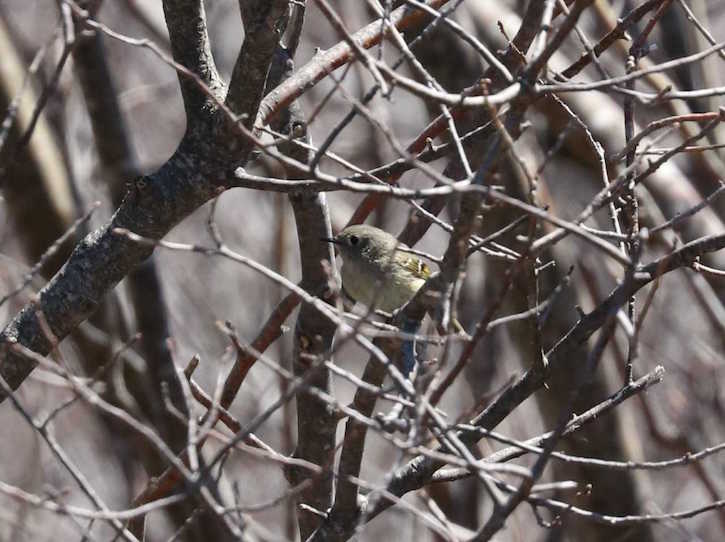
Our Lists –
Scotland Road, and along the way to Plum Island:
Canada Goose – 1.
Mute Swan (2) – Scotland Road, beaver pond.
Green-winged Teal (25) – Scotland Road, Common Pasture.
Blue-winged Teal (1) – Scotland Road, Common Pasture.
Ring-necked Duck (2) – Scotland Road, beaver pond.
Bufflehead (25) – Merrimack river behind Joppa Flats.
Great Blue Heron (3) – Artichoke Reservoir.
Turkey Vulture – common.
Killdeer (1) – Scotland Road, Common Pasture.
Mourning Dove (1) – along route.
American Crow – common.
White-breasted Nuthatch (2) – Newbury Village.
Eastern Bluebird (2) – Scotland Road, Common Pasture.
American Robin – common.
Carolina Wren (1) – along route.
European Starling – common.
Palm Warbler (2) – Scotland Road, Common Pasture
Song Sparrow – common.
Northern Cardinal (2) – along route.
Red-winged Blackbird – common.
Common Grackle – common.
House Finch (3) – along route.
American Goldfinch – common.
Plum Island:
Canada Goose – common.
Gadwall (4) – Pannes.
American Black Duck (15) – various.
Bufflehead – (15) Bill Forward Pool.
Red-breasted Merganser (1) – Salt Pannes.
Wild Turkey (3) – S-curves.
Double-crested Cormorant (7) – various.
Great Blue Heron (3) – Hellcat Salt Marsh.
Great Egret (12) – various.
Osprey (5) – various.
Killdeer (1) – Maine Panne.
Herring Gull – common.
Great Black-backed Gull (1) – North Marsh.
Downy Woodpecker (1) – Banding Station.
Northern Flicker (3) – roadside.
American Kestrel (1) Parking lot #1.
Eastern Phoebe (2) – Parking lot #1.
American Crow – common.
Tree Swallow (1) – Parking lot #1.
Barn Swallow (2) – Parking lot #1.
Black-capped Chickadee (2) – Hellcat.
Brown Creeper (1 in hand) – Banding Station.
Ruby-crowned Kinglet (2) – Banding Station.
American Robin- common.
Eastern Towhee (1) – roadside.
Chipping Sparrow (7) – roadside.
Song Sparrow – abundant along roadside.
Red-winged Blackbird – common.
Brown-headed Cowbird (1) – Banding Station.




